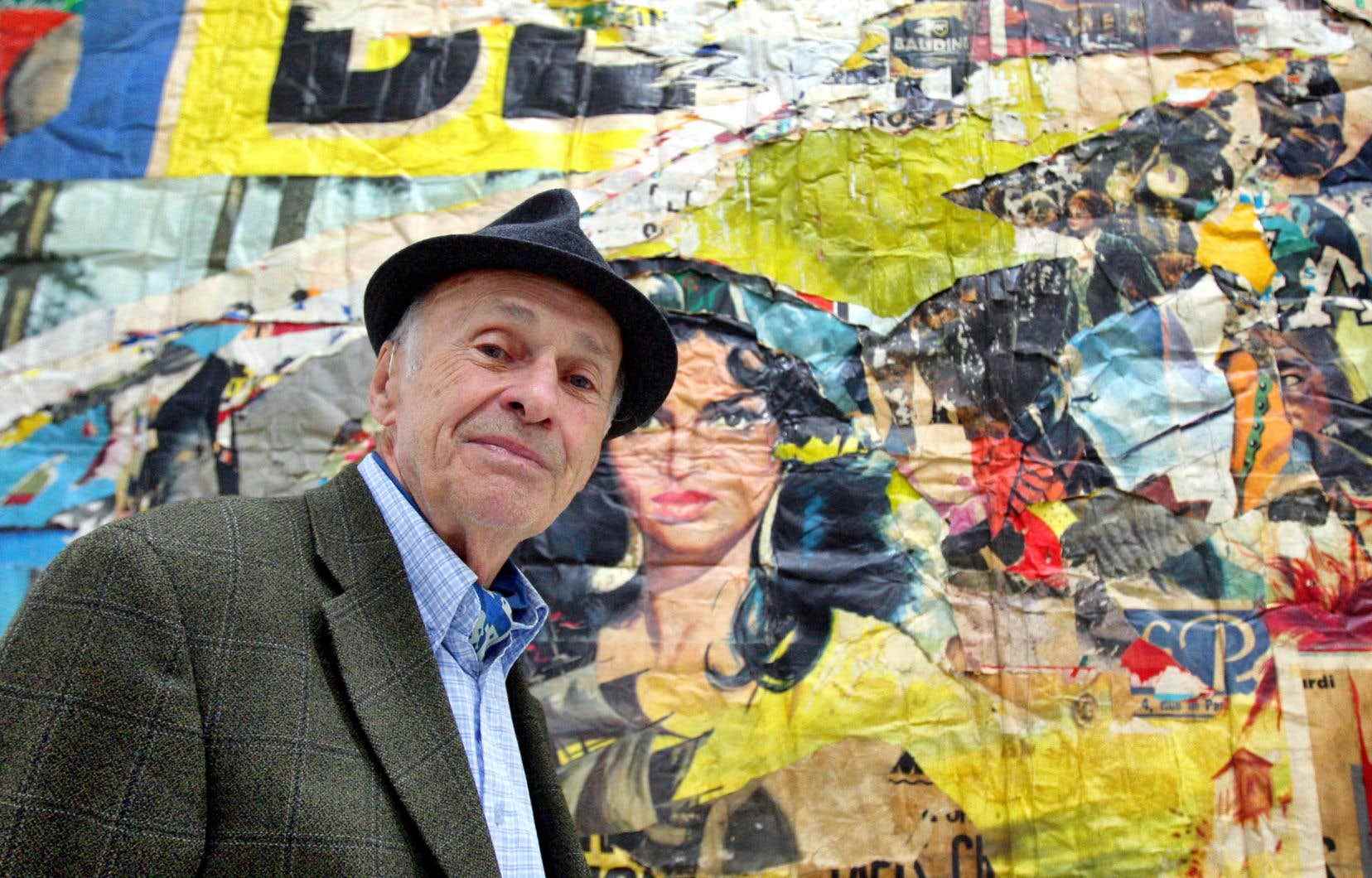Jacques Villeglé, who died at the age of 96, has all his life torn from the walls the posters already lacerated by anonymous hands or damaged by the weather, to compose huge colorful paintings.
Considered by contemporary street artists as the “grandfather” of urban art, the French artist said he wanted to “bring the street into museums”.
This unprecedented and joyful work of a lifetime was consecrated in 2008 by a major retrospective at the Center Pompidou, which announced his death on Tuesday.
Founding member of the New Realists group in 1960, with Arman and Yves Klein in particular, Jacques Villeglé, whose real name is Jacques Mahé de la Villeglé, was born on March 27, 1926 in Quimper and studied at the Beaux-Arts in Rennes then Nantes. .
“The posters immediately interested me. I understood that with them, we would see the evolution of the world, the words change, new colors”, he had explained to Agence France-Presse on the occasion of his Parisian retrospective.
Among the New Realists, the Swiss visual artist Jean Tinguely at the time made a “painting machine” with recycled materials, Yves Klein launched “the blue revolution” by placing blue powder – “the cheapest”, said Villeglé — on canvas.
Pop-art?
“The poster Carrefour Sevres Montparnasse (made for the Paris Biennale in 1961 and considered the most ambitious of his lacerated posters, editor’s note), I picked it up on the ground, “he said in 2008.
“With a friend, we took three taxis to bring it directly to the exhibition site. In the 1960s, it was said that the museum had to be taken to the streets. Me, I said that it is the street which must enter the museums, which are a little cemeteries. In America, I am considered a precursor of pop art with Jasper Johns. I’m sure it’s because of this poster, ”he continued.
It was with his friend the visual artist photographer Raymond Hains, who died in 2005, that he took off his first poster, in 1949 in Paris.
Very attracted at first by letter games, which remind him of cubism, the artist then decides according to his mood, selecting a set of shapes, or colors, more or less incongruous associations.
He then takes off the superposition of posters entirely and sticks the whole thing on a canvas, “appropriating the creative gesture of others”, according to Sophie Duplaix, chief curator of contemporary collections at the Center Pompidou.
For him, she adds, it is a question of “relying on this creation made by others, a very innovative attitude to which he held all his life”, unlike fellow travelers such as Hains or Mimmo Rotella.
Socio-political graphics
Sometimes, “I frame like a photographer frames his photos” but “there is no intervention on the poster”, confided the artist. “Among the New Realists, I was considered lazy, unlike Jean Tinguely, who worked, worked…”
Totally abstract, his works where yellow, red and blue, black and ocher burst, are sometimes paler and as if blurred by the succession of layers of paper soaked by the rain.
Pieces of advertising posters collide with slogans or photographs of politicians, whose image has been hijacked by anonymous people.
The end of the 1980s was a “golden age” for Villeglé because there was “a lot of wild posting”, he said. On presidential election night in April 1988, “I took a truck, five guys and we went for a drive. In one hour, I did a whole exhibition”, he laughed.
The artist continued his work based on torn posters until 2003, when they became rarer on the walls.
In the 1970s, he also created “socio-political graphics”, anonymous writing pasted on the walls of the metro, dreaming of creating an alphabet that he highlighted through typography.
